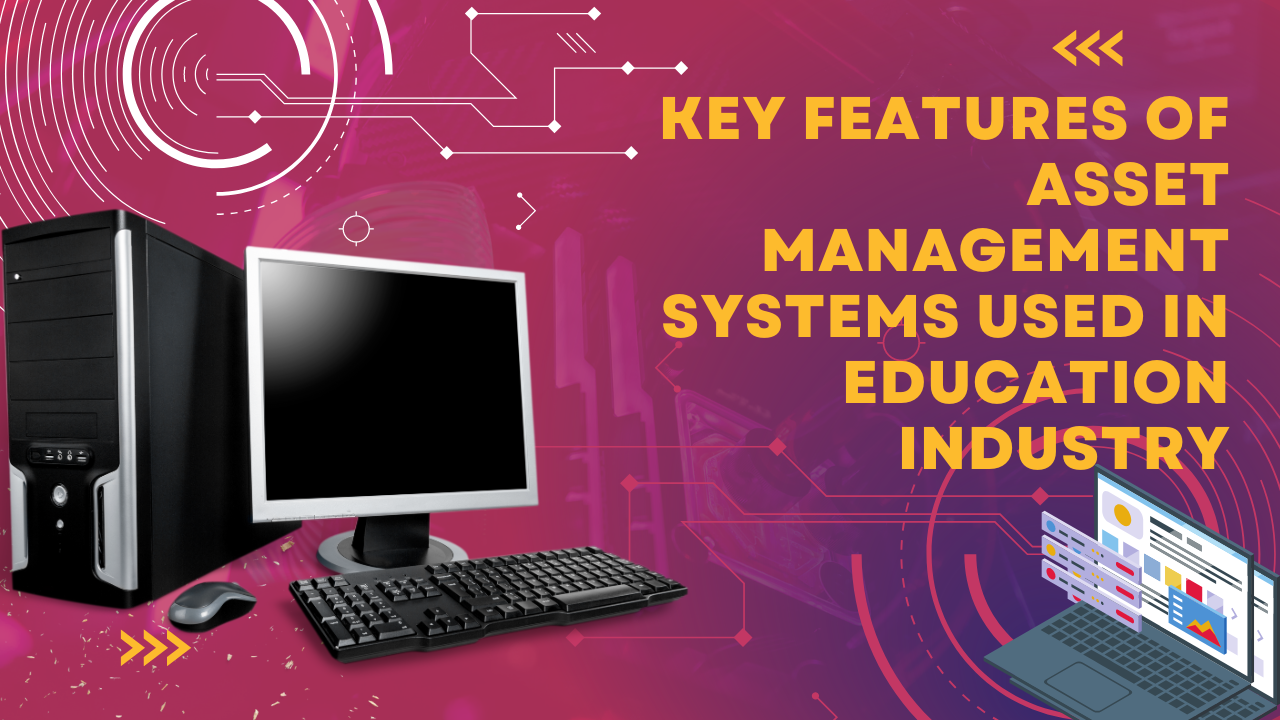

In today’s fast-paced educational landscape, the efficient management of assets plays a crucial role in ensuring the smooth functioning of educational institutions. Whether it’s a school, a university, or a training center, managing assets effectively can lead to improved productivity, cost savings, and enhanced overall operations. Asset management systems tailored for the education sector have emerged as valuable tools in achieving these goals. These systems are designed to help educational institutions track, maintain, and utilize their assets optimally.
Contents
Benefits of Asset Management for Education
1. Minimizing Asset Expenditure
Efficient asset management directly impacts an institution’s financial health. By accurately tracking and maintaining assets, educational institutions can extend the lifespan of equipment and facilities. Through features like maintenance scheduling and depreciation tracking, institutions can make informed decisions about repairs, upgrades, and replacements. This prevents premature asset replacements and reduces unnecessary expenditures, leading to cost savings over the long term.
2. Ensuring Safety of Students and Faculty
A safe learning environment is paramount in any educational institution. Asset management systems contribute to safety by ensuring that equipment and facilities are well-maintained and compliant with safety standards. For instance, regular maintenance scheduling helps identify potential safety hazards before they escalate. Additionally, tracking assets like safety equipment, laboratory instruments, and infrastructure allows institutions to address safety concerns promptly and prevent accidents that could jeopardize the well-being of students, faculty, and staff.
3. Maintaining Availability of Essential Resources
Education thrives on the availability of resources necessary for effective teaching and learning. Asset management systems enable educational institutions to keep track of the location and status of various assets. This ensures that essential resources are readily available when needed, minimizing disruptions to classes and research activities. For instance, a university laboratory can efficiently manage its equipment inventory, making it easier for professors and students to access the tools required for experiments and research projects.
Must-have Features of Asset Management Systems
The features you’ve listed are indeed valuable for an Asset Management system used in an educational setting. Here’s a breakdown of each feature and its significance:
1. Asset Monitoring
Real-time monitoring of assets helps in tracking their availability, usage, and condition. This enables educational institutions to optimize asset allocation and maintenance.
2. Mobile Device Management and Remote Controlling
With the proliferation of mobile devices in education, managing and controlling these devices remotely ensures security, updates, and compliance. It also allows troubleshooting without physical access.
3. API (Application Programming Interface)
An API(Application Programming Interface) allows seamless integration with other software and systems used in the institution, promoting data consistency and reducing manual input.
4. Asset Tracking through QR Codes
QR codes simplify asset identification and tracking. Staff can quickly scan codes to access asset information, aiding in efficient inventory management.
5. Contract Lifecycle Management
Educational institutions often have contracts with vendors for various services. Managing the entire lifecycle of these contracts within the asset management system ensures timely renewals and compliance.
6. Alerts
Real-time alerts for asset issues, such as maintenance requirements or overdue returns, help in proactive management, preventing disruptions in educational activities.
7. Software Metering
Tracking software installations and usage helps institutions manage licenses, ensure compliance, and optimize software expenditures.
8. Financial Management Tools
Integrating financial features like budget allocation, expenditure tracking, and depreciation calculations provides a comprehensive overview of asset-related financials.
9. Configuration Management Database (CMDB)
A CMDB stores information about assets and their configurations. This aids in understanding asset relationships, dependencies, and impacts, facilitating better decision-making.
Things to Consider Before Purchasing Asset Management Software for Education
Scalability
Ensure that the software can handle the growth of your educational institution. As your asset inventory and needs expand, the software should be able to accommodate the increased load.
Customizability
The software should be flexible enough to adapt to your institution’s specific workflows and requirements. A one-size-fits-all solution might not align perfectly with your needs.
Integration
Check if the software can integrate with other systems you’re already using, such as your existing IT management tools or financial software. Smooth integration minimizes disruptions and data silos.
Data Security and Compliance
As educational institutions handle sensitive student and staff data, ensure that the software meets data security standards and complies with relevant regulations like GDPR or FERPA.
Mobile Compatibility
With the rise of mobile devices, having a mobile-compatible version or app can greatly enhance the accessibility and usability of the software.
Training and Onboarding
Consider the level of training and support required for your staff to effectively use the software. A vendor that offers comprehensive training materials, webinars, and onboarding support can be beneficial.
Cost and Licensing
Understand the pricing structure of the software. Is it a one-time purchase or a subscription model? Are there additional costs for updates, support, or user licenses? Make sure the software fits within your budget.
User Feedback and Reviews
Research what other educational institutions are saying about the software. User reviews and feedback can give you insights into real-world experiences.
Future Upgrades and Enhancement
Inquire about the vendor’s roadmap for the software. Will they continue to enhance and update the software? A vendor committed to ongoing improvements can ensure your investment remains relevant.
Taking the time to thoroughly evaluate these factors will help you select an Asset Management system for higher education that aligns with your institution’s needs, goals, and budget. The features required can vary based on the size of the institution, the types of assets being managed, and the specific needs of the educational organization. It’s important to thoroughly assess the institution’s requirements before implementing an Asset Management system.









